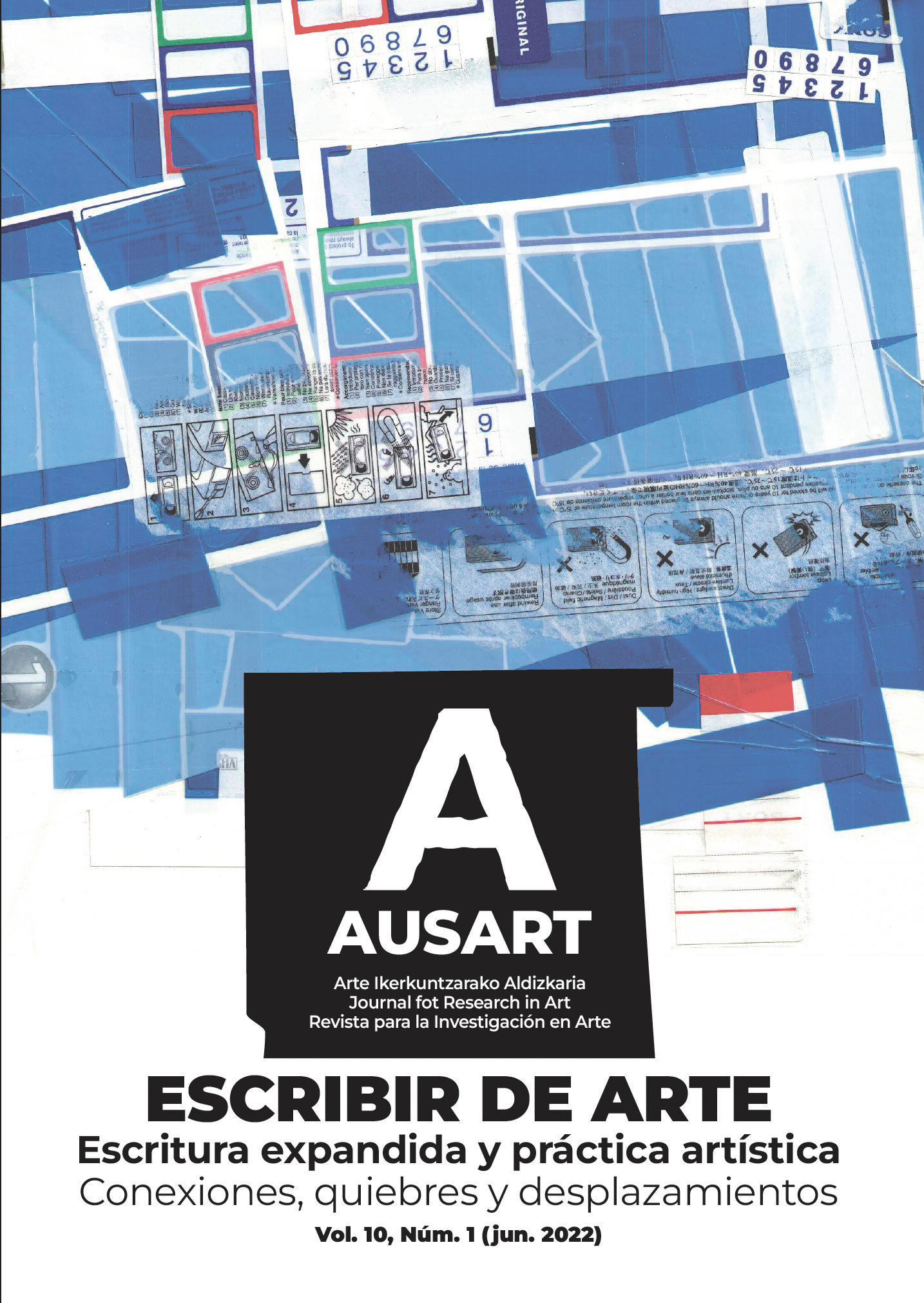Redes que crean arte Plataformas de comunicación virtual entre artistas digitales
##plugins.themes.bootstrap3.article.main##
##plugins.themes.bootstrap3.article.sidebar##
Resumen
Con la aparición de las comunidades virtuales en Internet se dieron lugar espacios de comunicación remota, así como la generación de contenido teórico sobre arte digital. Este artículo presenta los primeros espacios virtuales formados por artistas digitales en Estados Unidos de América y en Europa a lo largo de los años 80 y 90. El trabajo se basa en el concepto de 'red como arte, redes que crean arte', profundizando en la relevancia del contenido generado en estos canales de comunicación para la historia del arte. A través de métodos de arqueología de los medios, se estudia el contexto en el cual surgieron estas plataformas digitales de comunicación y la forma en la que los participantes generaron contenido de archivo artístico e histórico a través de conversaciones privadas de email, debates en foros, conferencias y exposiciones virtuales.
Cómo citar
##plugins.themes.bootstrap3.article.details##
COMUNIDADES VIRTUALES, ARTE DIGITAL, REDES, ARQUEOLOGÍA DE LOS MEDIOS, COMUNICACIÓN
Bazzichelli, Tatiana. 2009. Networking: The net as artwork. Aarhus, Denmark: Aarhus University
Boix Piqué, Montserrat. 2001. «La comunicación como aliada: Tejiendo redes de mujeres». «El viaje de las internautas«, número monográfico Género y Comunicación 3. https://n9.cl/m3gd9
Cilleruelo Gutiérrez, Lourdes. 2006. «Arte y comunidades virtuales: El aspecto creativo de la comunicación». En Net Art: Prácticas estéticas y políticas en la red, Laura Baigorri & Lourdes Cilleruelo, 29-39. Madrid: Brumaria
Couey, Anna. 1991. «Cyber art: The art of communication systems». Matrix Information and Discovery 1(4)
Couey, Anna. 2003. «Restructuring power: Telecommunication works produced by women». En Women, art, and technology, edited by Judy Malloy; foreword by Pat Bentson. Cambridge MA: MIT
Couey, Anna & Judy Malloy. 2018. «A conversation on the Arts Wire Interactive Art Conference». Social Media Archeology and Poetics Web Archive. https://n9.cl/8whn9
Cox, Donna J., Ellen Sandor & Janine Fron. eds. 2018. New media futures: The rise of women in the digital arts. Forewords by Lisa Wainwright, Anne Balsamo & Judy Malloy. Chicago IL: University of Illinois. https://doi.org/10.5406/j.ctv8j4d3
Evans, Claire L. 2018. Broad band: The untold story of the women who made the Internet. New York: Portfolio
Friedman, Ken. 1995. «The early days of mail art: A historical overview». En Eternal network: A mail art anthology, edited by Chuck Welch, 3-16. Calgary AB: University of Calgary
Fritz, Darko. 2016. «International networks of early digital art». En A companion to digital art, edited by Christiane Paul, 46-68. Chichester SXW: Wiley Blackwell. https://doi.org/10.1002/9781118475249.ch2
Held, John. 1995. «New directions: Into the nineties». En Eternal network: A mail art anthology, edited by Chuck Welch, 103-112. Calgary AB: University of Calgary
Huffman, Kathy Rae & Valie Djordjevic. 2018. «Where are the women? Interview with Kathy Rae Huffman & Valie Djordjevic». By Anna Gorchakovskaya. Digicult.it, 25 jul. https://n9.cl/44bri
Huffman, Kathy Rae. 2003. «Face Settings: An international co-cooking and communication project». En Women, art and technology, edited by Judy Malloy; foreword by Pat Bentson, 398-411. Cambridge MA: MIT
Malloy, Judy, ed. 2016. Social media archeology and poetics. Cambridge MA: MIT. https://doi.org/10.7551/mitpress/9780262034654.001.0001
Rheingold, Howard. 1994. The virtual community: Finding connection in a computerized world. London: Secker & Warburg
Shanken, Edward A. 2003. «From cybernetics to telematics: The art, pedagogy, and theory of Roy Ascott». En Telematic embrace: Visionary theories of art, technology, and consciousness, edited and with an essay by Edward A. Shanken. Berkeley CA: University of California. https://doi.org/10.1525/9780520935372-003
Smite, Rasa. 2012. Creative networks: In the rearview mirror of Eastern European history. Translation, Linda Vebere. Amsterdam: Institute of Network Cultures
Wilding, Faith. 1998. «Where is feminism in cyberfeminism?». N.paradoxa 2: 6-13. https://n9.cl/pw2y3

Esta obra está bajo una licencia internacional Creative Commons Atribución-CompartirIgual 4.0.

Atribución-CompartirIgual 4.0 Internacional (CC BY-SA 4.0)
Usted es libre de:
- Compartir — copiar y redistribuir el material en cualquier medio o formato
- Adaptar — remezclar, transformar y construir a partir del material para cualquier propósito, incluso comercialmente.


 https://orcid.org/0000-0001-9456-1340
https://orcid.org/0000-0001-9456-1340